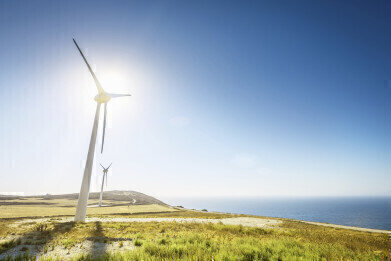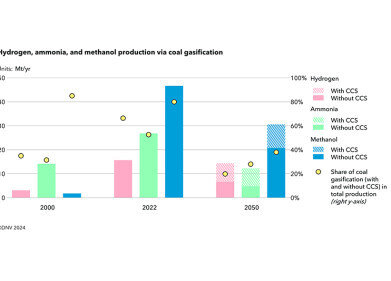Green Energy
How Did UK Wind Farm Energy Exceed Nuclear Energy?
Nov 14 2014
According to the National Grid, wind farms produced more energy than power stations in the UK on October 22nd this year. This was due to a combination of faults in nuclear power plants and strong winds. During this 24-hour period, wind farms produced 14.2% of total energy generation, compared with 13.2% generated by nuclear power stations. This follows a calculation by the National Grid that a record 6,372 MW of power was generated by wind farms on October 18th; another recent milestone for wind power. Despite being generated at a time of low electricity demand, this figure represented almost 20% of the UK’s total electricity.
A temporary switch...?
Unfortunately, wind power’s increased output compared with that from nuclear power plants is expected to be only temporary, caused by an unusual situation in which 8 out of 15 UK nuclear power plants are down, and very strong winds are creating increased turbine output. However, wind power will need to play an increasingly larger part if the EU is going to reduce greenhouse emissions gas by 40% by 2030, compared with levels in 1990, as recently agreed by EU Leaders.
There are many reasons behind the current offline status of ageing UK nuclear power reactors, according to EDF energy. Sizewell B is currently undergoing ‘statutory outage’ for refuelling and maintenance. Reactor 4 at Hunterston B is also undergoing maintenance and is due to be online again during early November. One unit at Dungeness B is currently being refuelled and another is due back online shortly after being closed down following the discovery of a boiler pump fault. During August, all 4 reactors at Heysham and Hartlepool were taken down following the discovery of a crack on a boiler spine.
Mix of energy sources vital for UK energy security
A diverse mix of energy sources is vital to ensure UK energy security, according to a government spokesperson. Speaking with the BBC, he said, "We're preventing a predicted energy crunch by turning round a legacy of underinvestment and neglect. To deliver this, we need a diverse energy mix that includes renewable sources like wind and solar alongside nuclear and technologies like carbon capture and storage so we can continue to use fossil fuels in a cleaner way."
However, wind farms are proving controversial both among politicians and in rural areas, and the government is offering higher long-term subsidies to nuclear than to wind. In October, former UK Environment Secretary, Owen Paterson called for the production of new small nuclear plants across the country after heavily criticising wind farms for the insignificant amount of energy that they produce, taking an unfair share of subsidies and for spoiling rural views.
Jennifer Webber, a spokeswoman for trade body RenewableUK, said, "Wind power is often used as a convenient whipping boy by political opponents and vested interests. All the while, it's been quietly powering millions of homes across the UK and providing a robust response to its vocal detractors."
Events
May 05 2024 Seville, Spain
May 13 2024 Munich, Germany
May 23 2024 Beijing, China
May 23 2024 Beijing, China
Jun 10 2024 Algiers, Algeria














